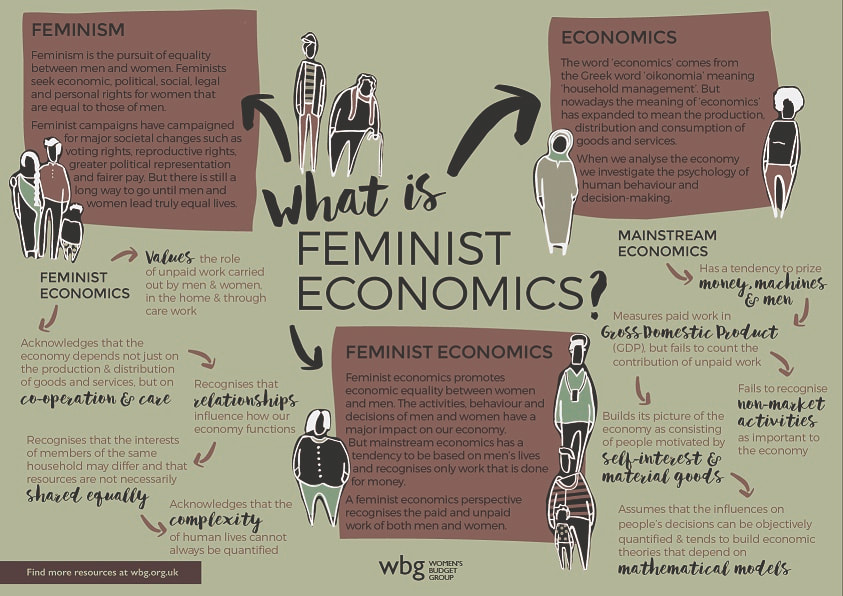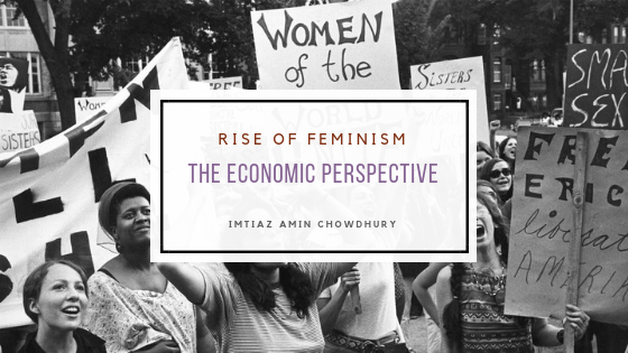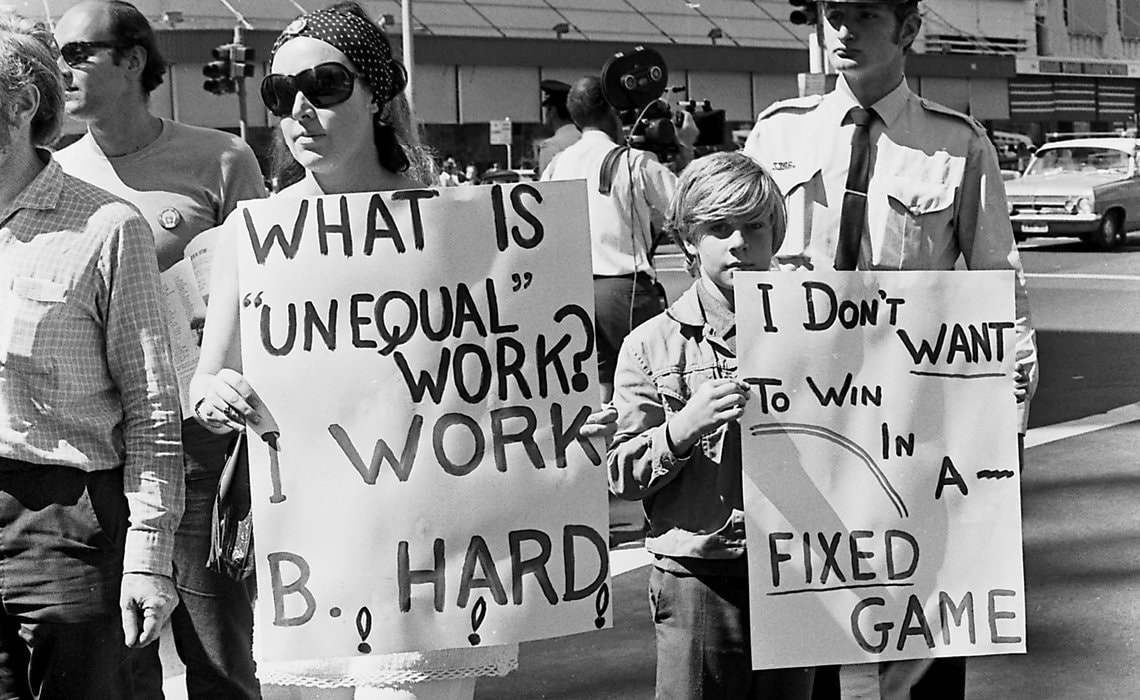ECONOMICS STUDY CENTER, UNIVERSITY OF DHAKA
|
Imtiaz Amin Chowdhury Unless somebody has been living in a cave away from human contact or under a rock, just about every individual living in the 21st century has heard about the concept of feminism, albeit vaguely or only about one of the many founding pillars over which feminism rests; for example, women empowerment. While the crowd usually splits upon the subject of the effectiveness of feminism in bringing about a positive change in the lives of women and society in general, it’s time to take a step back and take a look at the rise of feminism from an unbiased economic point of view.  The core idea of feminism is to ensure equal rights, facilities and treatment for women as that of men. Now the early years of the feminist movement were spent in obtaining the right to vote and overcoming legal inequalities. This was around 1840. The industrial revolution had just paved the way for the first industries to come to production. Labour, as we know, is one of the four factors of production. By 1850, 15% of women worked outside homes in the UK. Some employers preferred to hire women as it was easier to exploit women. Women would receive lower payments than men. As the industrial revolution progressed, more and more women joined the workforce. Unions gradually grew up and worked to gain higher salaries and better working environments. Usually, from lower class or immigrant backgrounds, many women worked in the textile factories, some worked as domestic hands (housemaids). The domestic life of the working women suffered as they were faced with the double burden of factory work followed by domestic chores and childcare. “Between 1830 and 1860, women remained a key labor force for this (textile) growing industry. Mill superintendents paid recruiters to circulate through northern New England and to bring suitable young women to work in their mills. The wages, typically set at $3.00 to $3.50 per week, were much higher than anything farm daughters could earn in their hometowns and proved a strong attraction.”- Thomas Dublin. By the early 20th century, scientific advancement led to the development of new technology and machines. This resulted in some of the working women to move into a new field, clerical work. During WWI (1914-1918), a large number of women were recruited into jobs vacated by men who had gone to fight in the war. New jobs were also created as part of the war effort, for example in munitions factories. World War II changed both the type of work women did and the number at which they did it. Almost five million women were in the workforce in 1939 which grew to approximately seven million between 1940-1945. The void in the labor force created by departing soldiers meant opportunities for employment of the women. World War II presented opportunities to move into occupations previously thought of as exclusive to men, especially the aircraft industry, where a majority of workers were women by 1943. After the war, it was expected that the women would return to domestic life to make way for the returning men. Mothers told their daughters what they had done during the war, and how their horizons had been limited later on. The ‘60s and ‘70s saw the emergence of feminist groups and heightened awareness of gender inequality – campaigning for more rights and greater opportunities saw many more women aware of their potential and the need for change. In 1988, Marilyn Waring published “If Women Counted: A New Feminist Economics”, a ground-breaking and systematic critique of the system of national accounts, the international standard of measuring economic growth, and the ways in which women’s unpaid work, as well as the value of Nature, have been excluded from what counts as productive in the economy. Feminist Economics deals specifically with the topics that have been neglected in the field, such as care work, or economic theories which could be improved through better incorporation of gendered effects and interactions, such as between paid and unpaid sectors of economies. The discussion, as mentioned above, suggests a positive correlation between women’s participation in the labor force and their ability to take independent decisions. Employment provided women with economic freedom which meant that they were no longer bound to the household or dependent on the income of the men and thus free to be in charge of their own lives. This newfound freedom created a sense of awareness in them with a claim to be treated as peers demanding the same level of respect that men would mutually display in their interactions. Through participation in education, women are now working side by side men and in many cases, leading nations. From heads of states to corporate heads, women have proved their worth and are now breaking stereotypes. Madam Curie, Rosalind Franklin, Mother Theresa, “Iron Lady” Margaret Thatcher are only but a few of the innumerable women who lend a hand in shaping history as we know it. In the recent years, Marry T. Barra (General Motors), Ginni Rometty (IBM), Indra Nooyi (PepsiCo), Safra A. Catz (Oracle Corporation), Marilyn Hewson (Lockheed Martin) are some of the women who have led Fortune 500 companies. The endeavors of the forerunners of the feminist movement have left a permanent effect in the socio-economic landscape. Society, as we know it, is reluctant to accept changes easily. Patience, persistence, and dedication were key to achieving the status that women currently enjoy. While the journey has not been smooth, perception towards women has gradually shifted since the early days of the feminist movement. Women are now invaluable members of the society and we look forward to seeing larger participation of women in activities of the economy as well as the society.
0 Comments
Leave a Reply. |
Send your articles to: |



